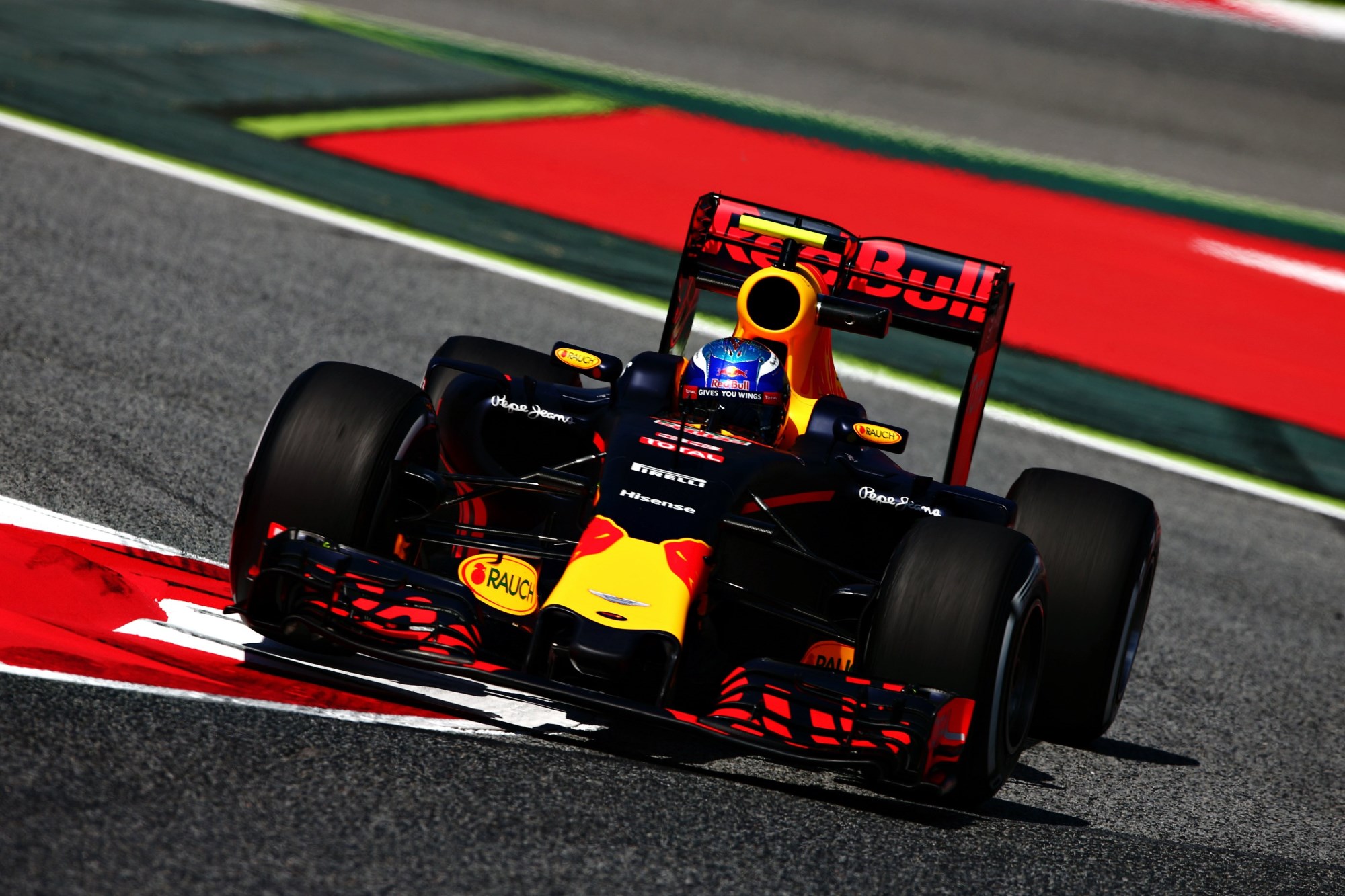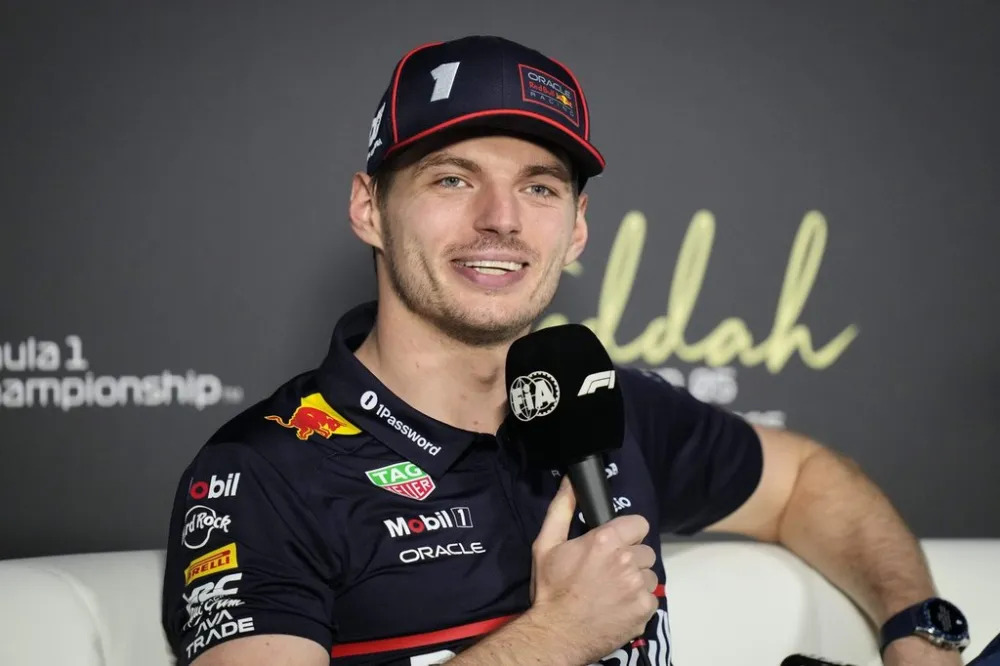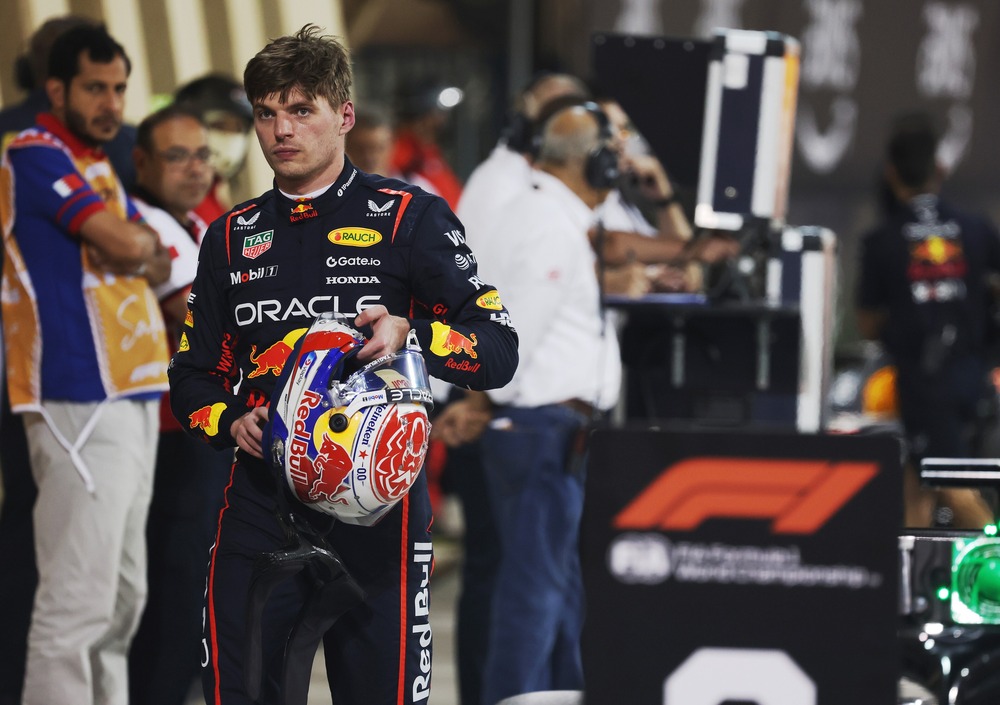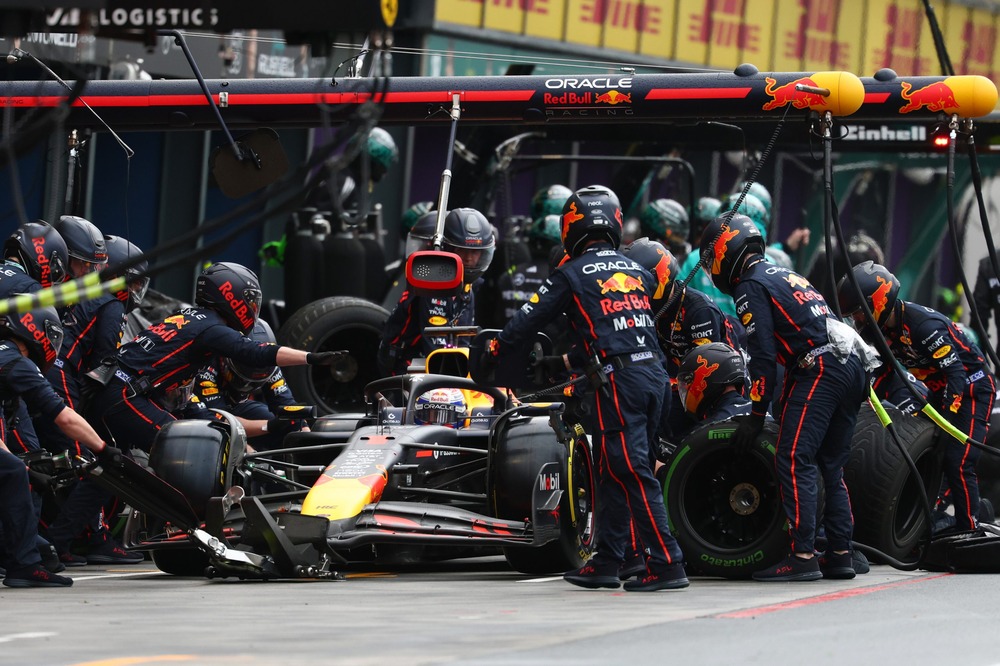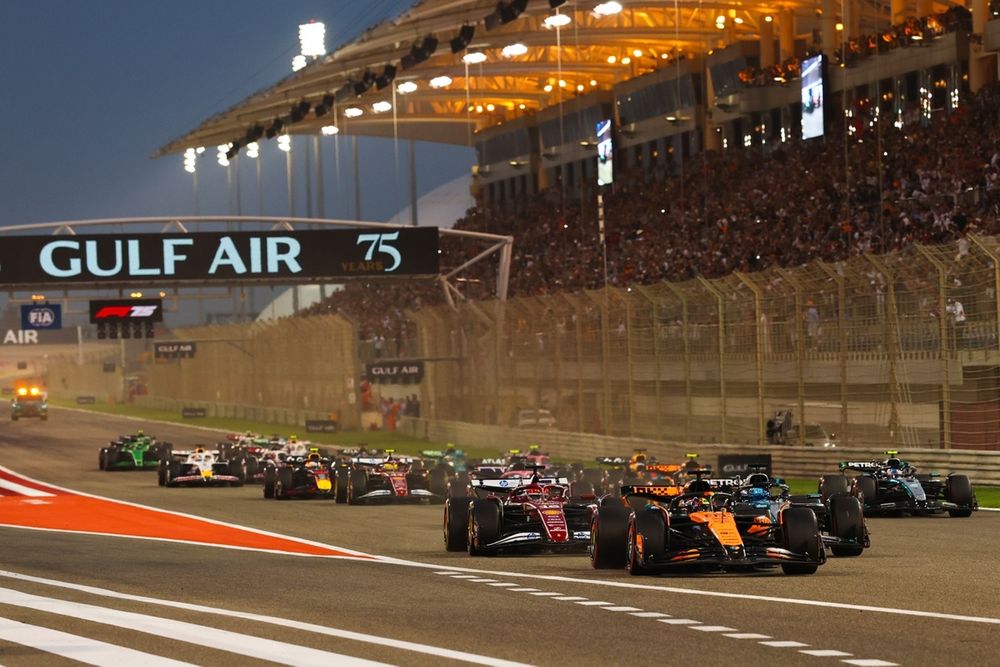Max Verstappen says he was “amazed” by the amount of close racing that took place in F1 in 2016 when revisiting footage from that season in contrast to today’s on-track action.
Verstappen has often voiced his frustration with the current generation of cars whose aerodynamics hinder a driver’s ability to closely follow a rival and limit overtaking opportunities.
But the Red Bull charger also points to the sheer size and width of today’s cars as a factor that impacts wheel-to-wheel racing.
“The cars are just too wide now,” Verstappen said in an interview with De Telegraaf. “As a result, you cannot drive many different lines, if you are behind someone else.
“You cannot get close at all and the car has no balance.”
The 23-year-old says he recently reviewed footage from F1’s 2016 season – his second year in the sport marked by his maiden win with Red Bull at Barcelona – and was surprised by the amount of action that took place back then up and down the field with cars that were narrower than today’s machines
“I recently came across a video from 2016 on YouTube,” he explained. “I was amazed by the amount of racing that was going on that year.
“I couldn’t remember that at all. Back then the cars were also a lot narrower.”
The on-track statistics from 2016 support Verstappen’s comments. That season, there was an average of 46.7 overtakes per race, while last year in F1, the average was just 31.4.
“Making the cars wider has not been good for the racing,” he contended. “For the pure driving feeling, we now have a lot more grip.
“What is more important? For me as a driver it’s what it feels like, but for the fans of course it’s the racing aspect.”
Verstappen says the generation of cars fielded by teams over a decade ago are his favourite.
“I really liked the cars from 2004 to 2008,” he said. “My favorites are those from 2006 and 2007. Not a team in particular, but in general those cars looked really good.
“They were a lot smaller, narrower and lighter than now. That helps enormously, because there was a lot more action on the track.”

